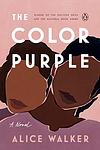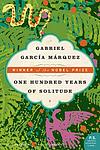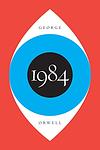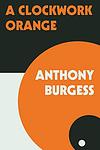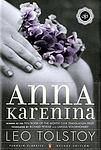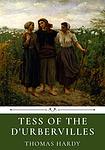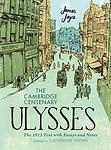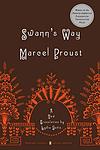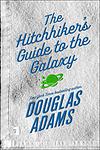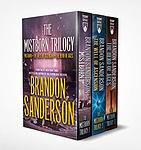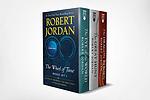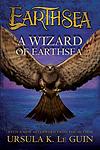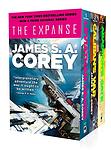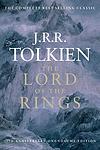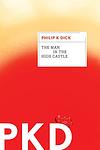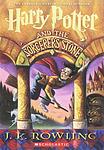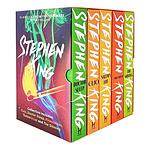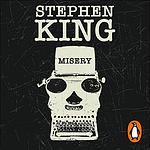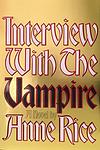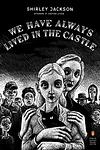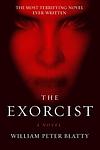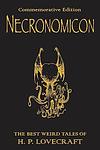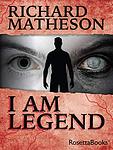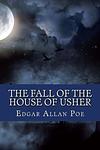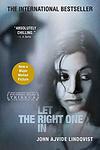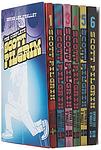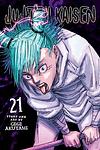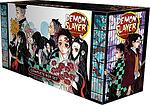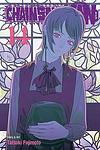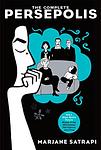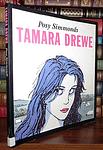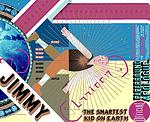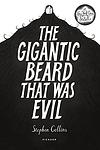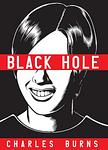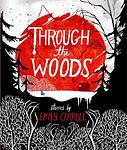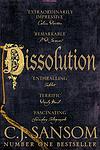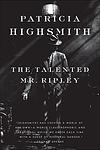The Books You've Always Meant to Read
This is one of the 284 lists we use to generate our main The Greatest Books list.
-
A Little Life by Hanya Yanagihara
The novel is a deeply moving portrayal of four friends in New York City, spanning over several decades. It primarily focuses on Jude, a man with a mysterious and traumatic past, who struggles with physical disability and emotional trauma. The story explores themes of friendship, love, trauma, suffering, and the human will to endure in spite of life's hardships. It is an epic tale of heartbreak and despair but also of resilience and enduring love.
-
The Secret History by Donna Tartt
A group of six classics students at a small, elite Vermont college, led by a charismatic professor, become entranced by the study of Greek culture and decide to recreate a Dionysian ritual, which ends in a tragic accident. The group, bound by their shared secret, begins to unravel as paranoia and guilt take hold. The novel explores themes of beauty and terror, the allure of the esoteric, and the destructive consequences of obsession.
-
The Virgin Suicides by Jeffrey Eugenides
The novel is a haunting and tragic tale of the five Lisbon sisters who live in suburban America in the 1970s. Their strict, overbearing parents keep them isolated from the world, leading to a sense of mystery and intrigue about the girls in their community. This fascination turns into morbid curiosity when one of the sisters commits suicide, and the remaining sisters become even more sheltered. The story is narrated by a group of neighborhood boys who are obsessed with the girls, and their suicides, trying to piece together the reasons behind their tragic ends.
-
All the Light We Cannot See by Anthony Doerr
Set during the turmoil of World War II, the novel follows the intersecting lives of a blind French girl and a German boy. The girl, living in occupied France, seeks solace in the world of books and the imagination, while the boy, a member of Hitler Youth, is a radio operator for the German forces. Their paths cross in the walled city of Saint-Malo, with the narrative exploring themes of survival, morality, and the human spirit.
-
Never Let Me Go by Kazuo Ishiguro
The novel is a haunting tale of three friends, who grow up together at a seemingly idyllic English boarding school. As they mature, they discover a dark secret about their school and the purpose of their existence, which is to become organ donors for the rest of society. The story is a profound exploration of what it means to be human, the morality of scientific innovation, and the heartbreaking reality of love and loss.
-
American Psycho by Bret Easton Ellis
The novel is a disturbing and graphic exploration of the mind of a wealthy, young and handsome Wall Street investment banker who is also a psychopathic serial killer. He leads a double life, appearing to be a charming and sophisticated businessman by day, while indulging in horrific acts of violence and murder by night. The narrative provides a satirical critique of 1980s American consumer culture, vanity, and excess, while also delving into the dark underbelly of human nature.
-
Hamnet by Maggie O'Farrell
"Hamnet" is a deeply moving and beautifully written historical novel that reimagines the life of a young boy, Hamnet, who is the son of a glovemaker in Stratford-upon-Avon. The boy tragically dies at the age of 11, which leaves a profound impact on his family, particularly his father, who is inspired to write one of the world's most famous plays. The narrative alternates between the time leading up to Hamnet's death and the aftermath, providing an intimate portrait of grief, love, and the power of art.
-
Norwegian Wood by Haruki Murakami
Set in Tokyo during the late 1960s, the novel follows a college student as he navigates a complex love triangle while grappling with his own mental health and the societal pressures of the time. He's torn between his love for a beautiful but emotionally troubled woman and his growing feelings for a lively, outgoing classmate. As he confronts his past, present, and future, the narrative explores themes of love, loss, and personal growth.
-
The Handmaid's Tale by Margaret Atwood
Set in a dystopian future, this novel presents a society where women are stripped of their rights and are classified into various roles based on their fertility and societal status. The protagonist is a handmaid, a class of women used solely for their reproductive capabilities by the ruling class. The story is a chilling exploration of the extreme end of misogyny, where women are reduced to their biological functions, and a critique of religious fundamentalism.
-
The Color Purple by Alice Walker
Set in the early 20th century, the novel is an epistolary tale of a young African-American woman named Celie, living in the South. She faces constant abuse and hardship, first from her father and then from her husband. The story unfolds through her letters written to God and her sister Nettie, revealing her emotional journey from oppression to self-discovery and independence, aided by her relationships with strong women around her. The narrative explores themes of racism, sexism, domestic violence, and the power of sisterhood and love.
-
The Kite Runner by Khaled Hosseini
This novel is a powerful story set against the backdrop of tumultuous events in Afghanistan, from the fall of the monarchy through the Soviet invasion and the rise of the Taliban regime. It follows the life of a wealthy boy and his best friend, a servant's son, their shared love for kite flying, and a terrible incident that tears their lives apart. The narrative explores themes of guilt, betrayal and redemption as the protagonist, now an adult living in America, is called back to his war-torn homeland to right the wrongs of his past.
-
Wolf Hall by Hilary Mantel
The novel is a historical fiction set in the 1500s, during the reign of King Henry VIII. The story is told from the perspective of Thomas Cromwell, a man of humble beginnings who rises to become the King's chief minister. The narrative explores the political and religious upheavals of the time, including King Henry's break with the Catholic Church and his controversial marriage to Anne Boleyn. The protagonist's cunning, ambition, and survival instincts are central to the plot as he navigates the treacherous waters of the Tudor court.
-
The Shadow of the Wind by Carlos Ruiz Zafon
The novel follows the story of a young boy in post-war Barcelona, who discovers a mysterious book in a hidden library that his father takes him to, which houses forgotten books. The boy becomes captivated by the book and its author, but as he grows older, he realizes that someone is destroying all books written by this author. As he delves deeper into the mystery, the boy's life becomes intertwined with the author's, revealing a dark and tragic past that someone wants to be kept hidden. The story is a mix of romance, mystery, and a historical narrative set against the turbulent backdrop of a city recovering from war.
-
Beloved by Toni Morrison
This novel tells the story of a former African-American slave woman who, after escaping to Ohio, is haunted by the ghost of her deceased daughter. The protagonist is forced to confront her repressed memories and the horrific realities of her past, including the desperate act she committed to protect her children from a life of slavery. The narrative is a poignant exploration of the physical, emotional, and psychological scars inflicted by the institution of slavery, and the struggle for identity and self-acceptance in its aftermath.
-
If on a Winter's Night a Traveller by Italo Calvino
The novel is a postmodernist narrative that follows the adventures of the reader, who is trying to read a book called "If on a Winter's Night a Traveller." However, the reader keeps encountering obstacles that prevent him from finishing the book, including printer's errors, censorship, and interruptions from other characters. The story is interspersed with the beginnings of ten different novels, each interrupted at a moment of suspense. The book is a meditation on reading, writing, and the nature of narrative itself.
-
One Hundred Years of Solitude by Gabriel Garcia Marquez
This novel is a multi-generational saga that focuses on the Buendía family, who founded the fictional town of Macondo. It explores themes of love, loss, family, and the cyclical nature of history. The story is filled with magical realism, blending the supernatural with the ordinary, as it chronicles the family's experiences, including civil war, marriages, births, and deaths. The book is renowned for its narrative style and its exploration of solitude, fate, and the inevitability of repetition in history.
-
White Teeth by Zadie Smith
This novel follows the lives of two friends, a working-class Englishman and a Bangladeshi Muslim, living in London. The story explores the complex relationships between people of different races, cultures, and generations in modern Britain, with themes of identity, immigration, and the cultural and social changes that have shaped the country. The narrative is enriched by the characters' personal histories and the historical events that have shaped their lives.
-
Fingersmith by Sarah Waters
The novel is a gripping tale set in Victorian England, revolving around two young women, a petty thief and a rich heiress, whose lives intertwine in unforeseen ways. The thief is part of a con to defraud the heiress of her fortune, but as the plot thickens, the lines between deception and truth, loyalty and betrayal, love and manipulation get blurred. The narrative is filled with unexpected twists and turns, exploring themes of gender, sexuality, and class, and keeps the readers on the edge till the end.
-
Nineteen Eighty Four by George Orwell
Set in a dystopian future, the novel presents a society under the total control of a totalitarian regime, led by the omnipresent Big Brother. The protagonist, a low-ranking member of 'the Party', begins to question the regime and falls in love with a woman, an act of rebellion in a world where independent thought, dissent, and love are prohibited. The novel explores themes of surveillance, censorship, and the manipulation of truth.
-
Crime and Punishment by Fyodor Dostoevsky
A young, impoverished former student in Saint Petersburg, Russia, formulates a plan to kill an unscrupulous pawnbroker to redistribute her wealth among the needy. However, after carrying out the act, he is consumed by guilt and paranoia, leading to a psychological battle within himself. As he grapples with his actions, he also navigates complex relationships with a variety of characters, including a virtuous prostitute, his sister, and a relentless detective. The narrative explores themes of morality, redemption, and the psychological impacts of crime.
-
Rebecca by Daphne du Maurier
A young woman marries a wealthy widower and moves into his large English country house. She quickly realizes that the memory of her husband's first wife, Rebecca, haunts every corner of the estate. The housekeeper's obsessive devotion to Rebecca and the mysterious circumstances of her death continue to overshadow the second wife's attempts to make a happy life with her husband. As secrets about Rebecca's life and death are revealed, the new wife must grapple with her own identity and place within the household.
-
The Catcher in the Rye by J. D. Salinger
The novel follows the story of a teenager named Holden Caulfield, who has just been expelled from his prep school. The narrative unfolds over the course of three days, during which Holden experiences various forms of alienation and his mental state continues to unravel. He criticizes the adult world as "phony" and struggles with his own transition into adulthood. The book is a profound exploration of teenage rebellion, alienation, and the loss of innocence.
-
The Stranger by Albert Camus
The narrative follows a man who, after the death of his mother, falls into a routine of indifference and emotional detachment, leading him to commit an act of violence on a sun-drenched beach. His subsequent trial becomes less about the act itself and more about his inability to conform to societal norms and expectations, ultimately exploring themes of existentialism, absurdism, and the human condition.
-
The Great Gatsby by F. Scott Fitzgerald
Set in the summer of 1922, the novel follows the life of a young and mysterious millionaire, his extravagant lifestyle in Long Island, and his obsessive love for a beautiful former debutante. As the story unfolds, the millionaire's dark secrets and the corrupt reality of the American dream during the Jazz Age are revealed. The narrative is a critique of the hedonistic excess and moral decay of the era, ultimately leading to tragic consequences.
-
Lord of the Flies by William Golding
A group of British boys are stranded on an uninhabited island after their plane crashes during wartime. Initially, they attempt to establish order, creating rules and electing a leader. However, as time passes, their civility erodes, and they descend into savagery and chaos. The struggle for power intensifies, leading to violence and death. The novel explores themes of innocence, the inherent evil in mankind, and the thin veneer of civilization.
-
The Master and Margarita by Mikhail Bulgakov
This novel is a complex narrative that weaves together three distinct yet intertwined stories. The first story is set in 1930s Moscow and follows the devil and his entourage as they wreak havoc on the city's literary elite. The second story is a historical narrative about Pontius Pilate and his role in the crucifixion of Jesus Christ. The third story is a love story between the titular Master, a writer who has been driven to madness by the criticism of his work, and his devoted lover, Margarita. The novel is a satirical critique of Soviet society, particularly the literary establishment, and its treatment of artists. It also explores themes of love, sacrifice, and the nature of good and evil.
-
Wuthering Heights by Emily Brontë
This classic novel is a tale of love, revenge and social class set in the Yorkshire moors. It revolves around the intense, complex relationship between Catherine Earnshaw and Heathcliff, an orphan adopted by Catherine's father. Despite their deep affection for each other, Catherine marries Edgar Linton, a wealthy neighbor, leading Heathcliff to seek revenge on the two families. The story unfolds over two generations, reflecting the consequences of their choices and the destructive power of obsessive love.
-
A Clockwork Orange by Anthony Burgess
This novel follows the life of a violent young man named Alex, who is part of a youth subculture in a dystopian future England. Alex and his gang engage in a nightmarish spree of rape, assault, and robbery, until he is arrested and subjected to a psychological experiment by the government to "cure" him of his violent tendencies. The novel explores themes of free will, morality, and the nature of evil, while using a unique slang language invented by the author.
-
Slaughterhouse-Five by Kurt Vonnegut
The novel follows the life of Billy Pilgrim, a World War II veteran who has become "unstuck in time," experiencing his life events out of order. This includes his experiences as a prisoner of war in Dresden during the Allies' firebombing, his post-war life as a successful optometrist, his abduction by aliens from the planet Tralfamadore, and his eventual death. The book is a critique of war and a demonstration of the destructive nature of time, with a nonlinear narrative that reflects the chaos and unpredictability of life.
-
Anna Karenina by Leo Tolstoy
Set in 19th-century Russia, this novel revolves around the life of Anna Karenina, a high-society woman who, dissatisfied with her loveless marriage, embarks on a passionate affair with a charming officer named Count Vronsky. This scandalous affair leads to her social downfall, while parallel to this, the novel also explores the rural life and struggles of Levin, a landowner who seeks the meaning of life and true happiness. The book explores themes such as love, marriage, fidelity, societal norms, and the human quest for happiness.
-
Brighton Rock by Graham Greene
"Brighton Rock" is a thrilling crime novel set in 1930s Brighton, revolving around the life of a young gangster, who is involved in a series of violent acts and murders. The narrative also explores the themes of Catholicism, morality, and the nature of sin, as the protagonist struggles with his religious beliefs and the guilt of his actions. The story is further complicated by the involvement of a naive young woman who falls in love with the gangster, unaware of his dark side.
-
Tess of the d'Urbervilles by Thomas Hardy
This is a tragic tale of a young woman named Tess who comes from a poor family in rural England. Tess is sent to work for a wealthy family, where she is seduced by a man who abandons her after she becomes pregnant. The baby dies, and Tess is ostracized by her community. She falls in love with a kind man, but when she confesses her past, he rejects her. Desperate and heartbroken, Tess murders her former seducer and is eventually captured and executed. The novel explores themes of fate, injustice, and the oppressive sexual morals of its time.
-
Ulysses by James Joyce
Set in Dublin, the novel follows a day in the life of Leopold Bloom, an advertising salesman, as he navigates the city. The narrative, heavily influenced by Homer's Odyssey, explores themes of identity, heroism, and the complexities of everyday life. It is renowned for its stream-of-consciousness style and complex structure, making it a challenging but rewarding read.
-
Don Quixote by Miguel de Cervantes
This classic novel follows the adventures of a man who, driven mad by reading too many chivalric romances, decides to become a knight-errant and roam the world righting wrongs under the name Don Quixote. Accompanied by his loyal squire, Sancho Panza, he battles windmills he believes to be giants and champions the virtuous lady Dulcinea, who is in reality a simple peasant girl. The book is a richly layered critique of the popular literature of Cervantes' time and a profound exploration of reality and illusion, madness and sanity.
-
In Search of Lost Time by Marcel Proust
This renowned novel is a sweeping exploration of memory, love, art, and the passage of time, told through the narrator's recollections of his childhood and experiences into adulthood in the late 19th and early 20th century aristocratic France. The narrative is notable for its lengthy and intricate involuntary memory episodes, the most famous being the "madeleine episode". It explores the themes of time, space and memory, but also raises questions about the nature of art and literature, and the complex relationships between love, sexuality, and possession.
-
Les Misérables by Victor Hugo
Set in early 19th-century France, the narrative follows the lives and interactions of several characters, particularly the struggles of ex-convict Jean Valjean and his journey towards redemption. The story touches upon the nature of law and grace, and elaborates upon the history of France, architecture of Paris, politics, moral philosophy, antimonarchism, justice, religion, and the types and nature of romantic and familial love. It is known for its vivid and relatable characters, and its exploration of societal and moral issues.
-
Dune by Frank Herbert
Set in a distant future, the novel follows Paul Atreides, whose family assumes control of the desert planet Arrakis. As the only producer of a highly valuable resource, jurisdiction over Arrakis is contested among competing noble families. After Paul and his family are betrayed, the story explores themes of politics, religion, and man’s relationship to nature, as Paul leads a rebellion to restore his family's reign.
-
Good Omens by Terry Pratchett, Neil Gaiman
"Good Omens" is a humorous take on the biblical Apocalypse, following an angel and a demon who have grown fond of Earth and its inhabitants, and are not too keen on the impending end of the world. As they try to locate the misplaced Antichrist and prevent the Four Horsemen from bringing about Armageddon, they encounter an array of quirky characters, including witch-hunters, modern-day witches, and the Four Horsemen themselves. The novel combines comedy, fantasy, and philosophical themes, offering a satirical critique of religious prophecy and human nature.
-
Fahrenheit 451 by Ray Bradbury
In a dystopian future where books are banned and burned by the government to prevent dissenting ideas, a fireman named Guy Montag, whose job is to burn books, begins to question the society he serves. After a series of events, including meeting a free-thinking teenager and witnessing a woman choosing to die with her books, Montag begins to secretly collect and read books, leading to his eventual rebellion against the oppressive regime. The narrative serves as a critique of censorship, conformity, and the dangers of an illiterate society.
-
The Hitchhiker's Guide to the Galaxy by Douglas Adams
This comedic science fiction novel follows the intergalactic adventures of an unwitting human, Arthur Dent, who is rescued just before Earth's destruction by his friend Ford Prefect, a researcher for a galactic travel guide. Together, they hitch a ride on a stolen spaceship, encountering a range of bizarre characters, including a depressed robot and a two-headed ex-president of the galaxy. Through a series of satirical and absurd escapades, the book explores themes of existentialism, bureaucracy, and the absurdity of life, all while poking fun at the science fiction genre and offering witty commentary on the human condition.
-
The Three-Body Problem by Cixin Liu
The book is a science fiction novel that intertwines the cultural revolution of China with a complex narrative involving astrophysics, virtual reality, and alien contact. It follows a disillusioned scientist who, after suffering personal tragedy during the Cultural Revolution, sends a message into space, only to receive a response from an alien civilization on the brink of destruction. As the aliens plan their migration to Earth, a secret organization works to facilitate the invasion, while a disparate group of scientists and military personnel attempt to understand and prevent the impending extraterrestrial crisis. The novel grapples with themes of human nature, technological advancement, and the vast, often incomprehensible universe.
-
Mistborn by Brandon Sanderson
In a grim, ash-covered world ruled by the immortal Lord Ruler, a young street urchin discovers she possesses unique magical abilities—Allomancy, the power to ingest and burn metals to enhance physical and mental capabilities. She joins a group of rebel skaa, the oppressed class, led by a charismatic criminal mastermind, to overthrow the centuries-old tyranny. Together, they devise an elaborate heist to infiltrate the noble houses and spark a revolution, uncovering dark secrets and unexpected truths about their world and the origins of the Lord Ruler's power along the way.
-
Children Of Time by Adrian Tchaikovsky
"Children of Time" by Adrian Tchaikovsky is a science fiction novel that explores the evolution of two species, humans and spiders, on different planets. When Earth faces destruction, a group of humans embarks on a mission to terraform a new planet and create a new civilization. However, an experiment involving a virus meant to accelerate the evolution of monkeys goes wrong, leading to the unintended uplift of spiders. The story follows the parallel development of both species, highlighting their struggles, conflicts, and eventual convergence as they vie for dominance in a rapidly changing world.
-
The Eye Of The World by Robert Jordan
In a high fantasy realm woven with magic, prophecy, and conflict, a group of young villagers is thrust into an epic quest when their tranquil lives are shattered by the arrival of a mysterious stranger and a dark pursuing force. Guided by a wise and powerful mentor, they embark on a perilous journey, discovering that one among them might be the reincarnation of an ancient hero destined to confront a malevolent entity threatening the world. As they traverse diverse landscapes and face myriad dangers, they must come to terms with their own burgeoning abilities and the weight of fate upon their shoulders.
-
Rivers Of London by Ben Aaronovitch
In this urban fantasy novel, a young London police constable discovers he has a unique talent for magic after encountering a ghostly crime witness. Recruited into a secretive unit that deals with supernatural threats, he finds himself navigating a world where magic is real, and the city's rich history comes alive in dangerous ways. As he learns to master his newfound abilities, he must solve a puzzling murder case that intertwines with dark magical forces, all while trying to maintain peace between the mundane and the magical realms that coexist within the vibrant and historic landscape of London.
-
A Wizard of Earthsea by Ursula K. Le Guin
This fantasy novel follows the story of a young boy named Ged who lives in a world of islands called Earthsea. Ged discovers he has a natural talent for magic and is sent to a school for wizards on the island of Roke. As he grows and learns, his arrogance leads him to unleash a shadow creature that he must then spend years trying to defeat. The book explores themes of balance, power, and the danger of hubris, as Ged learns to control his abilities and accept responsibility for his actions.
-
The Name Of The Wind by Patrick Rothfuss
This fantasy novel follows the tale of a gifted young man who grows from a precocious child into a notorious wizard, known as the most notorious magician, musician, thief, and assassin. His life is one of hardship and danger, as he seeks knowledge and revenge following the tragic murder of his family by a group of supernatural beings. The story is told in retrospect as the protagonist recounts his past to a chronicler over the course of three days, revealing the truth behind the myths and legends that have come to surround his enigmatic persona.
-
Leviathan Wakes by James S. A. Corey
In a future where humanity has colonized the solar system, tensions rise between Earth, Mars, and the Belt, a region of space where resources are mined. The story follows a weary detective and an idealistic ship's officer who become embroiled in a vast conspiracy after a distress signal from a missing young woman leads them to a derelict spaceship and a potentially lethal alien life form. As the political situation deteriorates, they must navigate through the intricacies of interplanetary intrigue, terrorism, and an impending war, all while trying to prevent the spread of an extraterrestrial virus that threatens all of human civilization.
-
The Lone Way To A Small, Angry Planet by Becky Chambers
In this character-driven space opera, a diverse crew aboard a tunneling spaceship embarks on a treacherous mission to punch wormholes through the far reaches of the galaxy. As they journey to a distant planet fraught with conflict, the crew members—each with their own unique backgrounds, species, and perspectives—navigate the complexities of their interpersonal relationships, cultural differences, and personal struggles. The narrative delves into themes of friendship, family, and acceptance, painting a vivid picture of life in a vast, multicultural cosmos where the vastness of space is matched only by the depth of individual experiences and the bonds that form in the most unlikely of circumstances.
-
The Lord of the Rings by J. R. R. Tolkien
This epic high-fantasy novel centers around a modest hobbit who is entrusted with the task of destroying a powerful ring that could enable the dark lord to conquer the world. Accompanied by a diverse group of companions, the hobbit embarks on a perilous journey across Middle-earth, battling evil forces and facing numerous challenges. The narrative, rich in mythology and complex themes of good versus evil, friendship, and heroism, has had a profound influence on the fantasy genre.
-
The Fifth Season by N. K. Jemisin
A woman searches for her kidnapped daughter in a world ravaged by a catastrophic climate change event known as the Fifth Season. Simultaneously, the narrative follows a young girl with destructive powers and a man struggling to control his own similar abilities. The story explores themes of oppression, survival, and the destructive power of nature, all set in a dystopian world where the earth is constantly in flux, and society is strictly divided and controlled.
-
The Man in the High Castle by Philip K. Dick
Set in an alternate history where the Axis powers won World War II, this novel explores life in a world where the United States is divided into three parts: the Pacific States of America, controlled by Japan; the Rocky Mountain States, a neutral buffer zone; and the United States of America, controlled by Nazi Germany. The story follows several characters, including a jewelry designer, a trade minister, and a German secret agent, as they navigate this dystopian reality. The narrative is further complicated by the existence of a banned novel that depicts an alternate reality where the Allies won the war, causing characters to question their understanding of reality.
-
Magician by Raymond E. Feist
The book is a fantasy epic that follows the journey of a young boy named Pug, who rises from humble beginnings as an orphaned kitchen boy to become a powerful magician in the Kingdom of the Isles. His life takes a dramatic turn when he and his friend Tomas are swept into a conflict against an ancient enemy from another world, threatening not only their homeland but also the very fabric of reality. As Pug masters the arts of magic under the tutelage of the enigmatic magician Kulgan, he must navigate a path fraught with danger, political intrigue, and war. Alongside a diverse cast of characters, Pug's destiny unfolds as he becomes a key player in the struggle to save his world from destruction.
-
Harry Potter And The Philosopher's Stone by J. K Rowling
The story follows a young boy, Harry Potter, who learns on his 11th birthday that he is the orphaned son of two powerful wizards and possesses unique magical powers of his own. He is summoned from his life as an unwanted child to become a student at Hogwarts, an English boarding school for wizards. There, he meets several friends who become his closest allies and help him discover the truth about his parents' mysterious deaths, the dark wizard who wants to kill him, and the magical stone that holds immense power.
-
The Shining by Stephen King
A recovering alcoholic accepts a job as a winter caretaker at a remote Colorado hotel, hoping the isolation will help him reconnect with his wife and young son, and work on his writing. However, the hotel has a dark history and a powerful malevolent presence that influences him into violence, while his psychic son sees horrific forebodings from both past and future. As the winter weather leaves them snowbound, the father's sanity deteriorates, leading to a terrifying climax.
-
The Haunting of Hill House by Shirley Jackson
The book is a chilling tale that revolves around a group of four individuals who decide to stay in a notoriously haunted mansion to conduct a paranormal investigation. The main character, a shy, reclusive woman with a troubled past, becomes increasingly unstable as she experiences terrifying phenomena and becomes obsessed with the house. As the supernatural events escalate, the lines between reality and imagination blur, leading to a shocking and tragic conclusion.
-
It by Stephen King
A group of seven childhood friends, known as The Losers Club, come together in their small hometown to confront an evil entity that they first battled as children. This malevolent force, which often takes the form of a terrifying clown, preys on the children of their town by exploiting their deepest fears. The friends must confront their own personal demons and past traumas in order to once again face this entity, and the novel alternates between their childhood and adult experiences with this evil.
-
Frankenstein by Mary Shelley
This classic novel tells the story of a young scientist who creates a grotesque but sentient creature in an unorthodox scientific experiment. The scientist, horrified by his creation, abandons it, leading the creature to seek revenge. The novel explores themes of ambition, responsibility, guilt, and the potential consequences of playing God.
-
Misery by Stephen King
A successful novelist is rescued from a car crash by a deranged fan who is upset with the death of her favorite character from his books. Trapped in her remote home, the writer is subjected to physical and psychological torture as the fan forces him to write a new novel bringing the character back to life. As he writes for his life, he must also plan his escape before his captor's rage becomes deadly.
-
The Woman In Black by Susan Hill
The novel is a chilling ghost story set in the remote English countryside, where a young solicitor is sent to settle the estate of a recently deceased client. Upon his arrival at the eerie and isolated Eel Marsh House, he encounters unnerving supernatural occurrences and the repeated sightings of a mysterious woman dressed in black. As he delves deeper into the town's tragic history, he uncovers a tale of a vengeful spirit whose appearance foretells the death of children. The solicitor's skepticism turns to horror as he becomes entangled in the spectral web of the woman in black, and he must confront the haunting secrets that lie within the house and the town.
-
Interview with the Vampire by Anne Rice
The novel is a dark and atmospheric tale of a centuries-old vampire, Louis, who shares his life story with a young reporter. He recounts his transformation into a vampire by the charismatic and ruthless Lestat, their complex relationship, and their encounters with other supernatural beings. The narrative explores themes of immortality, loss, identity, and the human desire for love and companionship. The book is known for its rich detail and its philosophical and historical depth.
-
We Have Always Lived in the Castle by Shirley Jackson
This novel tells the story of the Blackwood sisters, Merricat and Constance, who live in isolation in their family mansion, following the mysterious death of their parents due to arsenic poisoning. The sisters' lives are disrupted when their estranged cousin, Charles, arrives with intentions of stealing their fortune. The story is a chilling exploration of family secrets, mental illness, and the destructive power of mob mentality.
-
Dracula by Bram Stoker
This classic horror novel tells the story of Count Dracula's attempt to move from Transylvania to England so that he may find new blood and spread the undead curse, and of the battle between Dracula and a small group of people led by Professor Abraham Van Helsing. The narrative is composed of journal entries, letters, and telegrams written by the novel's protagonists, providing different perspectives on the gruesome events unfolding. The book touches on themes of sexuality, gender roles, and the clash of modern science with traditional superstition.
-
The Exorcist by William Peter Blatty
"The Exorcist" is a chilling and suspenseful novel that follows the terrifying ordeal of a young girl named Regan who becomes possessed by a malevolent entity. As her behavior becomes increasingly disturbing and her health deteriorates, her desperate mother seeks the help of two priests who embark on a harrowing battle against the forces of evil. With its gripping narrative and intense portrayal of demonic possession, the book explores themes of faith, doubt, and the power of good versus evil, leaving readers on the edge of their seats until the shocking conclusion.
-
Necronomicon by H. P. Lovecraft
This book is a collection of fantastical and horror short stories, unified by the theme of the cosmic horror of the unknown and the insignificance of humans within the larger cosmos. The stories often feature arcane books, eldritch abominations, and protagonists who face the dire consequences of confronting forces beyond their understanding. The fictional grimoire, which shares the book's title, serves as a recurring plot device, symbolizing the dark knowledge and forbidden secrets that pervade the mythos created within these tales. The work has had a profound influence on the horror genre, inspiring countless writers and artists with its blend of the supernatural and the psychological, and its legacy of terror continues to endure in popular culture.
-
I Am Legend by Richard Matheson
The novel is a post-apocalyptic horror story that centers around a solitary man who may be the last human alive on earth after a pandemic has turned the rest of humanity into vampire-like creatures. He spends his days fortifying his home, hunting for food, and killing these creatures while they sleep. At night, he is tormented by their attempts to break into his home and kill him. His isolation drives him to the brink of insanity, and the novel explores themes of loneliness, survival, and the human capacity for hope in the face of utter despair.
-
The Fall of the House of Usher by Edgar Allan Poe
"The Fall of the House of Usher" is a chilling tale of a visit to a friend's decaying mansion, where the visitor witnesses strange events and learns about the Usher family's curse. The story is filled with eerie incidents, including the illness of the lady of the house, her subsequent death and entombment in the family vault, and her terrifying reappearance. The story culminates in the literal and metaphorical crumbling of the Usher house, symbolising the end of the cursed Usher lineage.
-
World War Z by Max Brooks
The book is an apocalyptic horror novel presented as a collection of individual accounts in the aftermath of a global pandemic that leads to a catastrophic zombie outbreak. Through interviews with survivors from various countries and walks of life, the narrative unfolds the social, political, cultural, and environmental implications of the zombie crisis, known as World War Z. The personal stories explore the widespread panic, the collapse and resurgence of governments, military strategies employed to combat the undead, and the human resilience in the face of a decimated world. The novel serves as a critique of societal responses to disasters and a commentary on the human condition.
-
The Rats by James Herbert
In this horror novel, the residents of London are terrorized by unusually large and intelligent rats with a taste for human flesh. The infestation quickly grows out of control, spreading fear and chaos throughout the city. As the government struggles to contain the situation, a young art teacher finds himself at the center of the nightmare, battling the relentless tide of rodents. The creatures' aggression and cunning make them formidable adversaries, and the fight for survival becomes increasingly desperate, revealing the dark underbelly of the city and the resilience of the human spirit in the face of a relentless and voracious enemy.
-
The King In Yellow by Robert W. Chambers
"The King In Yellow" is a collection of interconnected short stories that explore the mysterious and macabre world of the eponymous play, which is said to drive those who read it to madness. Set in a fictional world where the play's influence spreads like a plague, the book delves into themes of forbidden knowledge, the fragility of sanity, and the blurred lines between reality and fiction. With its haunting atmosphere and unsettling tales, "The King In Yellow" captivates readers with its dark and enigmatic narrative.
-
Let The Right One In by John Ajvide Lindqvist
The book is a dark and haunting tale set in a Swedish suburb during the 1980s, where a young boy, ostracized and bullied at school, finds an unlikely friendship with a mysterious new neighbor who only appears at night. As a series of gruesome murders plague the town, the boy becomes increasingly aware that his new friend is not what she seems. Blending elements of horror, romance, and coming-of-age, the story explores themes of loneliness, identity, and the desperate need for connection in a world that often seems cold and unforgiving.
-
Dawn Of The Dead by George Romero
In this horror novelization of a classic film, survivors of a zombie apocalypse seek refuge in a suburban shopping mall. As the undead hordes continue to swell and society crumbles outside the mall's walls, the group inside must fend off not only the relentless zombie threat but also the breakdown of human order. The story explores themes of consumerism, human nature, and survival as the characters face the terror of the walking dead and the realization that the sanctuary they've found may also become their tomb if they cannot overcome the challenges both outside and within their makeshift fortress.
-
Scott Pilgrim's Precious Little Life by Bryan Lee O'Malley
The graphic novel follows the life of a slacker and part-time musician, Scott Pilgrim, who falls for an enigmatic American delivery girl named Ramona Flowers. However, to win her heart, Scott must defeat her seven evil exes in a series of surreal video game-inspired battles. Set in Toronto, Canada, the story combines elements of romance, comedy, and fantasy, as Scott navigates the complexities of relationships, self-identity, and adulthood, all while showcasing the unique visual style and cultural references that have made the series a cult favorite.
-
Jujutsu Kaisen by Gege Akutami
In this dark fantasy manga series, a high school student is thrust into a hidden world of sorcery and spectral horrors when he swallows a cursed object to protect his friends. This act binds him to a powerful curse, and he must join a secret organization of Jujutsu Sorcerers to fight malevolent entities and collect the scattered pieces of the curse to prevent its malevolent power from wreaking havoc. As he undergoes rigorous training and battles, the student navigates a treacherous realm of sorcery, discovering his own latent abilities and the complex moral landscape of using curses to combat curses.
-
Demon Slayer by Koyoharu Gotouge
The book is a dark fantasy manga that follows the journey of a young boy who becomes a demon slayer after his family is slaughtered by demons, and his younger sister is turned into one. Driven by a mix of grief and determination, he joins an organization dedicated to exterminating demons and seeks a way to revert his sister back to her human form. Throughout his perilous quest, he encounters various allies and adversaries, mastering swordsmanship and harnessing unique breathing techniques to battle the demon threat and unravel the mysteries surrounding their origin and his family's tragedy.
-
Maus by Art Spiegelman
This graphic novel tells the story of a Holocaust survivor, as narrated by his son. The unique use of animals to represent different nationalities and ethnic groups adds a distinctive layer to the narrative. The protagonist's father recounts his experiences as a Polish Jew during World War II, offering a poignant depiction of the horrors of the Holocaust. The narrative also explores the complex father-son relationship, revealing the impact of such traumatic historical events on subsequent generations.
-
One Piece by Eiichiro Oda
The book is a thrilling adventure that follows a young, ambitious pirate whose dream is to find the world's ultimate treasure, known as "One Piece," and thereby become the Pirate King. Along his journey, he gathers a diverse crew of loyal companions, each with their own unique abilities and dreams. They sail the Grand Line, facing off against other pirates, the World Government, and various powerful enemies, all while exploring mysterious islands, uncovering hidden secrets, and forging strong bonds of friendship. The story is renowned for its intricate plot, dynamic characters, and a world rich with fantastical elements and lore.
-
Uzumaki by Junji Ito
The book is a horror manga that centers around a small fog-bound Japanese town cursed by supernatural events involving spirals. As the obsession with the spiral pattern begins to spread among the townspeople, it manifests in increasingly bizarre and terrifying ways, warping both the minds of the inhabitants and the very fabric of the town itself. The narrative follows a high school teenager and her boyfriend as they struggle to understand and survive the madness engulfing their once-peaceful home, revealing the spiral's hypnotic and monstrous influence on both the human psyche and the natural world.
-
Chainsaw Man by Tatsuki Fujimoto
The book is a dark fantasy manga that follows the life of a young man burdened with crippling debt, who finds himself entangled in a brutal world of devil hunters after merging with a devil dog he names Pochita. This transformation grants him the ability to transform parts of his body into chainsaws, which he uses to fight malevolent devils in exchange for money. As he becomes more involved in this violent and morally ambiguous society, he navigates through complex relationships, his own desires for a better life, and the sinister machinations of those who seek to use his unique powers for their own ends.
-
Palestine by Joe Sacco
The book is a graphic novel that combines the artistry of comics with the in-depth reporting of investigative journalism to explore the complexities of life in the West Bank and Gaza Strip during the early 1990s. Through a series of personal interviews, the author vividly portrays the daily struggles and enduring spirit of Palestinians living under Israeli occupation. The narrative weaves together historical context, cultural insights, and the poignant stories of individuals, offering a nuanced and humanizing perspective on a conflict often reduced to political talking points. The graphic novel's stark black-and-white illustrations serve to amplify the emotional impact of the testimonies and the harsh realities of the Palestinian experience.
-
Tokyo Ghoul by Sui Ishida
In a dark and twisted version of Tokyo, creatures known as ghouls lurk in the shadows, surviving by consuming human flesh. The story follows a young college student who, after a fateful encounter with a ghoul, becomes a half-ghoul himself. Thrust into a hidden world filled with danger and hunger, he must navigate the blurred lines between human and monster, grappling with his new reality and the moral complexities of his insatiable appetite. As he struggles to maintain his humanity, he finds himself caught in the crossfire between ghoul factions and the relentless ghoul investigators determined to eradicate their kind.
-
Persepolis by Marjane Satrapi
This graphic novel is a memoir that provides a personal account of the author's childhood and young adult years in Iran during and after the Islamic revolution. The story portrays the impact of war, political upheaval, and religious extremism on ordinary people, while also exploring themes of identity, resilience, and the power of storytelling. Despite the harsh realities the protagonist faces, the narrative also includes moments of humor and warmth, providing a nuanced view of life in Iran during this tumultuous period.
-
Watchmen by Alan Moore
Set in an alternate history where superheroes emerged in the 1940s and 1980s, the story follows a group of retired superheroes who are brought out of retirement after the murder of one of their own. As they investigate, they uncover a plot that could change the course of history and the balance of world power. The book explores complex themes such as the morality of power, the definition of heroism, and the value of human life.
-
Tamara Drewe by Posy Simmonds
The graphic novel revolves around a young journalist who returns to her small English village and becomes the center of attention among the local residents. Her arrival and subsequent transformation from an awkward teenager to a glamorous woman stir up a whirlwind of jealousy, infidelity, and gossip within the rural community, particularly among the guests and owners of a writers' retreat. The narrative, which is a modern reworking of Thomas Hardy's "Far from the Madding Crowd," explores themes of desire, the impact of beauty, and the complexities of romantic relationships, all while offering a satirical look at literary life and rural idylls.
-
Sandman by Neil Gaiman
"Sandman" is a dark and fantastical series that follows the character Dream, also known as Morpheus, one of the seven Endless who personify certain universal concepts that transcend beyond gods. The narrative explores Dream's realm and responsibilities, his interactions with humans, gods, and his own family, as well as the consequences when he is captured and subsequently escapes after 70 years. The series is renowned for its blending of myth, history, and contemporary issues, creating a richly nuanced universe that delves into the nature of storytelling itself.
-
Akira by Katsuhiro Otomo
Set in a post-apocalyptic Neo-Tokyo, this graphic novel follows the lives of two teenage friends, Tetsuo and Kaneda, who are members of a biker gang. After a motorcycle accident, Tetsuo develops telekinetic abilities and is taken by the military, which fears his growing powers might unleash another cataclysmic event similar to the one that destroyed Tokyo years earlier. As Tetsuo's powers spiral out of control, Kaneda, along with a group of rebels and psychics, must try to stop him and uncover the secrets of a mysterious entity known as "Akira," which is at the heart of the government's experiments and the city's destruction. The narrative explores themes of power, corruption, and the quest for identity against a backdrop of cyberpunk visuals and intense action.
-
Jimmy Corrigan, the Smartest Kid on Earth by Chris Ware
The book is a graphic novel that tells the story of Jimmy Corrigan, an awkward and lonely man in his mid-thirties. Jimmy has lived his entire life under the thumb of his overbearing mother. When he receives a letter from his estranged father, whom he has never met, he embarks on a journey that takes him from his home in Chicago to a small town in Michigan. Along the way, the narrative delves into the lives of his ancestors, revealing a history of loneliness and disappointment that seems to be repeating itself in Jimmy's own life.
-
The Gigantic Beard That Was Evil by Stephen Collins
In this graphic novel, readers are transported to the tidy, predictable island of Here, where everything is in its proper place, and the unkempt realm of There looms ominously nearby. The protagonist, Dave, lives a monotonous life until one day, his face sprouts an unstoppable, massive beard that disrupts the order of Here. The beard's wild growth challenges the community's obsession with conformity and control, leading to chaos and a profound exploration of fear, change, and humanity's relationship with nature. The narrative, told through evocative illustrations and sparse text, delves into themes of individuality versus society, the unknown, and the thin line between order and madness.
-
Black Hole by Charles Burns
The graphic novel in question is a dark and surreal exploration of adolescence, set in a 1970s Seattle suburb. It follows a group of high school students as they navigate the complexities of their teenage years, all while dealing with a mysterious sexually transmitted disease that causes grotesque physical mutations. The narrative delves into themes of alienation, transformation, and the desire for acceptance, weaving a haunting and visually striking tale that captures the anxieties and horrors of growing up.
-
Through The Woods by Emily Carroll
"Through the Woods" is a haunting collection of five eerie and atmospheric graphic stories that delve into the dark and unsettling world of fairy tales and folklore. Each tale is a standalone narrative, rich with gothic themes and chilling twists, exploring the sinister things that lurk in the forest and the horrors that await in the shadows. The book's striking and evocative illustrations complement the spine-tingling tales, creating an immersive experience that draws readers into the depths of the woods where the boundary between reality and nightmare blurs. With its blend of horror, suspense, and the supernatural, the book captivates with its exploration of fear and the unknown.
-
I Am Pilgrim by Terry Hayes
The book is a gripping espionage thriller that follows a retired intelligence agent known only by his codename, Pilgrim, who is drawn back into the world of covert operations to prevent a catastrophic terrorist attack. The protagonist is a master of disguise and forensic investigation, and he must use all his skills to track down a brilliant adversary who has crafted an unstoppable bio-terrorism plot. As Pilgrim races against time across international borders, he uncovers a chilling connection to his own past, forcing him to confront the moral ambiguities of his clandestine profession and the haunting memories he has tried to leave behind. The narrative weaves together intricate plotlines, rich character development, and a deep understanding of the darker aspects of global intelligence work.
-
The Appeal by Janice Hallett
"The Appeal" is a contemporary mystery novel that unfolds through a series of emails, texts, and documents as readers are invited to play detective. The story revolves around a small-town theater group that becomes embroiled in a complex case following a young girl's diagnosis with a rare form of cancer. As the community rallies to raise funds for her treatment, a new couple's arrival in town sets off a chain of events that leads to a murder. The novel challenges the reader to piece together clues and correspondences to uncover the truth behind the façade of charity, revealing the dark undercurrents of ambition, manipulation, and deceit within the seemingly close-knit community.
-
Killing Floor by Lee Child
In this gripping thriller, a former military policeman drifting through a small town is arrested for a murder he didn't commit. Upon his release, he finds himself embroiled in a dangerous conspiracy involving counterfeit money, a vast criminal enterprise, and the mysterious death of his brother. Determined to uncover the truth and exact revenge, he must use his skills to outwit the local police, FBI agents, and the mastermind behind the town's dark secrets, all while navigating a complex web of corruption and violence.
-
And Then There Were None by Agatha Christie
In this classic mystery novel, ten strangers are invited to a secluded mansion on a private island by a mysterious host who is nowhere to be found. As the guests begin to die one by one, mirroring a creepy nursery rhyme that hangs in each of their rooms, they realize that the killer is among them. As suspicion and fear escalate, they must uncover the murderer before no one remains.
-
Gone Girl by Gillian Flynn
This thrilling novel revolves around the sudden disappearance of a woman on her fifth wedding anniversary. As the investigation unfolds, all evidence points to her husband as the prime suspect. However, the story takes a twist as the wife's diary entries reveal a darker side to their seemingly perfect marriage. The narrative alternates between the husband's present-day perspective and the wife's diary entries, leaving readers in suspense about what truly happened. The book explores themes of deceit, media influence, and the complexities of marriage.
-
Murder on the Orient Express by Agatha Christie
A renowned Belgian detective finds himself embroiled in a complex murder case aboard the luxurious Orient Express train. The victim is a wealthy American businessman with numerous enemies, and the train's diverse passenger list includes individuals of varying nationalities and backgrounds, each with their own secrets. As the train is halted due to a snowdrift, the detective must race against time to solve the murder before the train reaches its destination and the murderer has a chance to escape.
-
Dissolution: A Shardlake Novel by C. J. Sansom
Set in the 16th century during the reign of King Henry VIII, the novel follows the story of Matthew Shardlake, a hunchbacked lawyer, who is sent by Thomas Cromwell to investigate the murder of a royal commissioner at a monastery. As Shardlake delves deeper into the case, he uncovers a series of secrets, lies, and corruption within the monastery. The story is a blend of historical fiction and crime thriller, offering a vivid portrayal of the political and religious turmoil of the Tudor period.
-
The Talented Mr. Ripley by Patricia Highsmith
The Talented Mr. Ripley is a psychological thriller that follows the story of Tom Ripley, a young man struggling to make ends meet in New York City. When a wealthy shipbuilder mistakes Tom for a close friend of his son, Dickie Greenleaf, he offers him an all-expenses-paid trip to Italy to persuade his wayward son to return home. Instead, Tom becomes obsessed with the luxurious lifestyle of Dickie and his girlfriend, Marge, and goes to extreme lengths to make it his own, including identity theft and murder.
-
The Spy Who Came in From the Cold by John le Carré
This novel is a fascinating tale of espionage during the Cold War, centered around a British intelligence officer who is seemingly ready to end his spy career. However, he is given one last mission before his retirement: to bring down the head of East German Intelligence. As he navigates the dangerous world of spies and double agents, he is forced to confront his own past and the sacrifices he has made for his country. The story is a complex exploration of morality, loyalty, and the personal cost of political conflict.
-
The Honjin Murders by Seishi Yokomizo
"The Honjin Murders" is a captivating mystery novel set in a rural village in Japan. When a young couple is found brutally murdered on their wedding night in an isolated mansion, the local police are baffled by the lack of evidence and suspects. As the investigation unfolds, dark family secrets, hidden motives, and a series of puzzling clues emerge, leading the reader on a thrilling journey to uncover the truth behind the Honjin murders.
Waterstones, 229 Books
That classic you're too embarrassed to admit you've never read? That doorstopper of a read still propping up one leg of your bed? You're amongst friends! Make good all your bookish ambitions with our guide to the essential additions to your home library - the best books you've never read.
Added 2 months ago.
This list has a weight of 38%. To learn more about what this means please visit the Rankings page.
Here is a list of what is decreasing the importance of this list:
- Voters: no voter information
- List: Creator of the list, sells the books on the list
If you think this is incorrect please e-mail us at [email protected].









